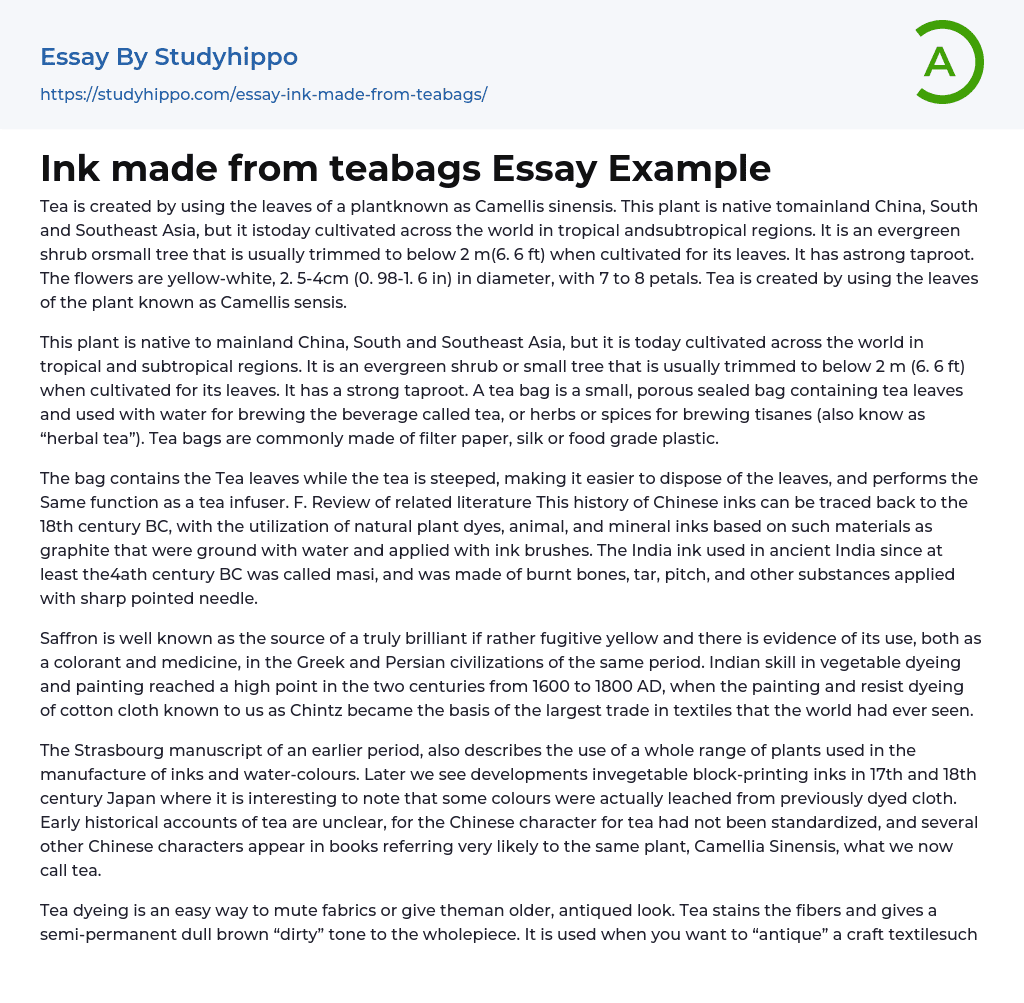Tea originates from the leaves of Camellia sinensis, a plant indigenous to mainland China, South and Southeast Asia. It is presently cultivated in tropical and subtropical regions worldwide. When grown for its leaves, Camellia sinensis is typically trimmed to under 2 meters (6.6 feet) in height. This perennial shrub or small tree possesses a strong taproot and yields yellow-white flowers with 7 to 8 petals measuring about 2.5-4 centimeters (0.98-1.6 inches) across.
The plant, which is originally from mainland China, South and Southeast Asia, is now cultivated worldwide in tropical and subtropical areas. It is an evergreen shrub or small tree that is usually pruned to be less than 2 m (6.6 ft) tall for leaf production. The plant has a strong taproot.
A tea b
...ag is a small, porous sealed bag that contains tea leaves and is used with water to make the beverage known as tea. It can also be used with herbs or spices to brew tisanes, which are sometimes called "herbal tea". Tea bags are typically made of filter paper, silk, or food-grade plastic.
The bag functions as a container for Tea leaves during steeping, simplifying the disposal process and functioning similarly to a tea infuser. In terms of related literature, Chinese ink has a history dating back to the 18th century BC. This involved utilizing natural plant dyes, as well as animal and mineral inks created from materials such as graphite. These substances were ground with water and applied using ink brushes. In ancient India, masi, a type of ink made from burnt bones, tar, pitch, and other substances, was used since at least the
4th century BC. It was applied using a sharp pointed needle.
Saffron, known for its bright yellow color, was used as a colorant and medicine in Greek and Persian civilizations. Between 1600 to 1800 AD, Indian expertise in coloring and painting with plant dyes reached its peak. During this time, the development of Chintz, a technique to paint and dye cotton fabric, became the basis of the largest textile trading industry in history.
The use of different plants for making inks and watercolors is mentioned in the Strasbourg manuscript from an earlier period. In Japan, during the 17th and 18th century, there were advancements in producing vegetable block-printing inks. It's important to mention that certain colors were obtained from cloth previously dyed. The early historical records about tea are unclear due to the lack of standardization in the Chinese character for tea. Additionally, various other Chinese characters found in books likely refer to the same plant now known as Camellia Sinensis or tea.
Tea dyeing is a simple method for toning down fabrics and imparting an aged appearance. Tea infiltrates the fibers and imparts a semi-permanent, subdued brown hue to the entire piece. This technique is employed when striving to give a vintage feel to craft textiles like doll dresses or small quilts. Griffiths utilizes tea and ink, occasionally supplemented with graphite, vodka, whiskey, or other substances, to produce her works. In the world of art, tea and ink have become a distinguishing characteristic of Griffiths' style.
- John Locke essays
- 9/11 essays
- A Good Teacher essays
- A Healthy Diet essays
- A Modest Proposal essays
- A&P essays
- Academic Achievement essays
- Achievement essays
- Achieving goals essays
- Admission essays
- Advantages And Disadvantages Of Internet essays
- Alcoholic drinks essays
- Ammonia essays
- Analytical essays
- Ancient Olympic Games essays
- APA essays
- Arabian Peninsula essays
- Argument essays
- Argumentative essays
- Art essays
- Atlantic Ocean essays
- Auto-ethnography essays
- Autobiography essays
- Ballad essays
- Batman essays
- Binge Eating essays
- Black Power Movement essays
- Blogger essays
- Body Mass Index essays
- Book I Want a Wife essays
- Boycott essays
- Breastfeeding essays
- Bulimia Nervosa essays
- Business essays
- Business Process essays
- Canterbury essays
- Carbonate essays
- Catalina de Erauso essays
- Cause and Effect essays
- Cesar Chavez essays
- Character Analysis essays
- Chemical Compound essays
- Chemical Element essays
- Chemical Substance essays
- Cherokee essays
- Cherry essays
- Childhood Obesity essays
- Chlorine essays
- Classification essays
- Cognitive Science essays




